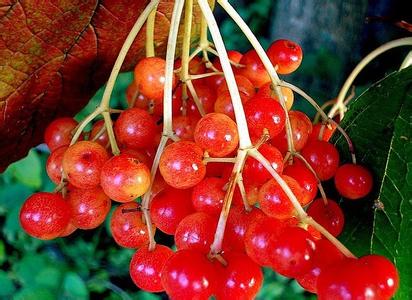Different processing methods of raw coffee beans and their respective advantages and disadvantages

Coffee treatment: refers to the removal of coffee cherry exocarp, pulp, mucous membrane, endocarp, silver skin five parts.
There are water washing method WIB, sun exposure method OIB, half water washing method (Semi washed method), and half day drying method (also known as honey treatment Miel Process)
Solarization method
The sun drying method is also called "natural drying method" because it uses natural sunlight to dry the fruits and raw beans of coffee. Due to the use of artificial and natural treatment methods in the process, the appearance of sun-dried beans looks irregular, prone to defects, less flattering, and the flavor of coffee beans is easily affected by the weather.
Sun-cured beans have a complete natural mellow taste and better viscosity, lower acidity and more changeable flavor. Mellow taste is an important condition of espresso, which produces a mellow and smooth feeling as strong as wine, and lovers of espresso can increase the weight of sun-dried beans. Coffee beans from Moka in Yemen, Harald in Ethiopia, Brazil and Sulawesi in Indonesia are often treated in this way.
The steps of solarization are as follows:
1. Choose beans: put the harvested fruit in the water tank, and the ripe fruit will sink, while the immature and overripe fruit will float up and can be removed.
two。 Drying: put the selected ripe fruit in the square for 5-6 days until fully dried. At this time, the fruit becomes dark brown with a moisture content of 13% 3. Shelling: after drying, the peel becomes fragile and easy to fall off, and can be removed by machine.
Farms run by enterprises usually have their own shelling factories, while small farms are processed by processing centers.
4. Selection and grading: exquisite farms identify defective beans manually or by machine, pick them out and throw them away.
Manual selection usually uses a transmission belt about 1 meter wide, with several female workers sitting on both sides visually picking out bad beans, and some good farms are even selected several times until defective beans are not seen.
Machine selection rules use computers to identify defective beans, followed by a grading process that divides coffee beans into several quality grades according to established standards. Good coffee enters the selected coffee market, while bad coffee flows into the commercial coffee market.
5. Polishing: the exocarp and endocarp can only be removed by shelling. At this time, the silver film is still wrapped in the outer layer of the seed, and the film has to be ground off by machine. Then, pack the coffee beans into a bag of 60KG. The weight of bags varies slightly from region to region. Most of them use sacks.
Washing method:
Because of the lack of sufficient sunshine in the West Indies, the Dutch introduced the "washing method", also known as "WIB", around 1740, which is different from the traditional sun method, also known as "OIB". Coffee beans exported from Java are often marked "WIB", which means "washed beans". Generally speaking, washed beans are bluish green, beautiful in appearance and have a clear and bright sour taste.
Coffee from Guatemala, Colombia, Blue Mountains, Kona, Kenya, Java and Panama are all washed beans. Washing is used in Latin America with the exception of Brazil.
The treatment steps of the washing method are as follows:
1. Choose beans: put the harvested fruit in a water tank and soak for about 24 hours. At this time, ripe fruit will sink, while immature and overripe fruit will float up and can be removed.
two。 Remove the pulp: use a machine to remove the skin and pulp, leaving only the coffee beans wrapped in the endocarp. At this time, there is a layer of mucous membrane on the outside of the beans, and the process of washing is to wash this layer of mucous membrane.
3. Hair alcohol: the adhesion of the mucosa is very strong, and it is not easy to remove. It must be placed in the slot for about 18-36 hours to make it alcohol and decompose the mucosa. There are two methods of fermentation, namely wet hair alcohol and dry hair alcohol, as the name implies, the former adds water, the latter does not add water. In the process of producing alcohol, the seeds and internal pulp will produce special changes, which is one of the steps that most affect the flavor of coffee. Some farms will add hot water or alkanolins to speed up the production of alcohol, which will have a negative impact on quality, and coffee lovers are not welcome.
4. Washing: farms that use water washing must build washing ponds and be able to introduce an endless supply of live water. During the treatment, the finished beans are put into the pool and passed back and forth, using the friction of beans and the power of running water to wash the coffee beans until smooth and clean.
5. Drying: after washing, the coffee beans are still wrapped in the pericarp with a moisture content of 50%. They must be dried to reduce the moisture content to 12%, otherwise they will continue to be mellow, moldy and rotten. The better treatment is to use sunlight to dry, although it will take 1-3 weeks, but the flavor is very good and very popular. In addition, machine drying is used in some places, which greatly shortens the processing time and makes the flavor not as good as that of sun-dried coffee.
6. Shelling: dried beans can be stored in a warehouse or handed over to the factory for shelling to remove endocarp and silver film.
7. Selection and grading: like tanning hair, washed coffee goes through a process of picking and grading to remove defective beans and ensure better quality, which is then handed over to exporters to sell around the world.
Semi-washing method:
First, move the red fruit and half-green and half-red fruit into the pulp sieving machine to remove the full pectin, do not need to take it to the sun, let alone pour it into the sink to ferment, but directly pour into the nearby pectin scraper (Demucilager) with a small amount of water, you can mechanically scrape off the sticky pectin shavings, take out the smooth pods and expose them outdoors until the water content is reduced to 12%. The coffee produced by semi-washing contains the characteristics of both washing and drying. The acidity, sweetness, seasoning, and flavor of the coffee are quite good; the disadvantage is that the coffee taste is not as strong as that produced by pure drying or washing.
The coffee flavor of semi-washing method is between the sun-washing method and water-washing method. This method is popular in Indonesia, and Manning uses semi-washing method.
Half-sun method:
Brazil used to use the method of tanning in the past, and there was a big difference in quality, which made Brazil synonymous with lower-middle quality. However, in order to improve its quality and reverse its image, the world's largest coffee producer carried out a quality revolution in the 1990s and vigorously promoted the global half-sun method. This method keeps the coffee washed clean, although the brightness decreases, but increases the sweetness and caramel flavor of the coffee.
Brazilian coffee fields are endless and are mostly harvested mechanically in order to meet the economic benefits. When 75% of the coffee fruit in the coffee garden turns red, mechanical harvesting is started, followed by the same pre-washing operation, which is moved into the sink to remove floating beans, sift out the sunken beans, and then use a large pulp screening machine to dig out the pulp and remove the pods covered with pectin. The next stage is separate from the washing method: the sticky pods do not need to be moved into the tank to ferment, but to the outdoor bean drying farm. Because of the dry climate in Brazil, the sticky pectin on the pods will harden in about a day or so. Then use a large number of manpower to turn up and down, so that the pods dry evenly inside and outside, so as not to return to moisture and stink. In about two to three days, with the help of the natural force of the sun pass and dry climate, the pods can achieve a certain degree of dehydration. Then further dry with a dryer, the water content is reduced to 10.5%, and the pods are stored in a special container for about 10 days to further mature, in order to stabilize the quality, remove sheep skins (pods) before export, remove coffee beans, and pack them in stages.
Important Notice :
前街咖啡 FrontStreet Coffee has moved to new addredd:
FrontStreet Coffee Address: 315,Donghua East Road,GuangZhou
Tel:020 38364473
- Prev

Tutorial: the easiest step for beginner coffee is to explain what kind of milk to use.
The first step is to understand the correct operation flow of the steam system of the coffee machine, understand the purpose of the empty steam pipe before and after foam, and understand the importance of towels and handy cleaning in coffee making. Step two, learn how to
- Next

Tutorials, tips and suggestions on making foam with an Italian coffee machine
So what makes a real cappuccino so delicious? Of course it's the skill of a barista. Have you ever had such a cappuccino? It looks like a cup of art and tastes silky? I hope you have, because that's what a cappuccino is all about. If you've ever had a cappuccino like this, I think you'll probably agree with me: it's hard.
Related
- What is the meaning of lactic acid fermentation with coffee bean treatment?
- How to judge the state of foam by sound?
- How does the latte pull out the unicorn pattern? Come to get for a little trick to improve the flower pull!
- Will flower pulling affect the taste of the latte?
- Do you know the history of coffee?
- The difference between honey treatment and sun washing what is raisin honey treatment?
- What kind of milk can a novice use to make coffee foam to keep the foam longer? The correct method and skills of milking tutorial sharing
- Why do washed coffee beans taste sour? Flavor characteristics of washed Coffee
- Introduction to the skill of how to practice the size and height of water injection around the circle of hand-brewed coffee
- How do beginners practice coffee flower drawing from scratch?

